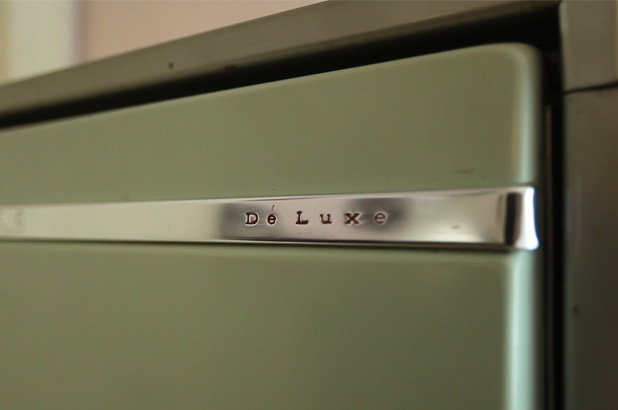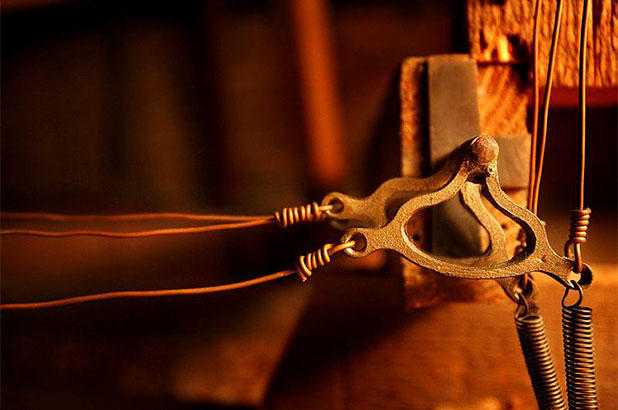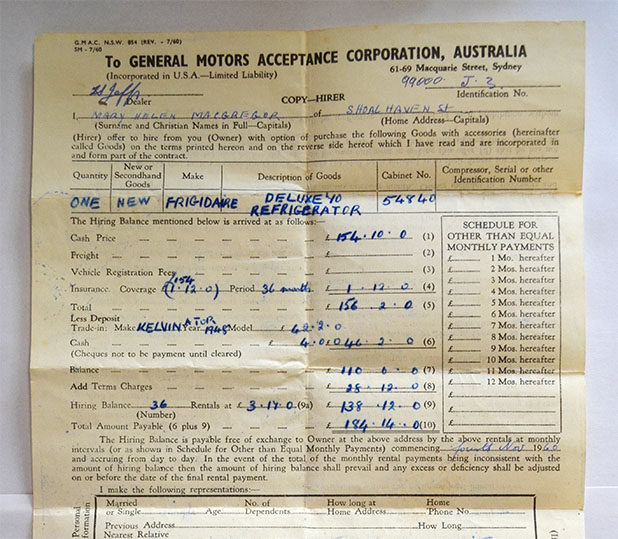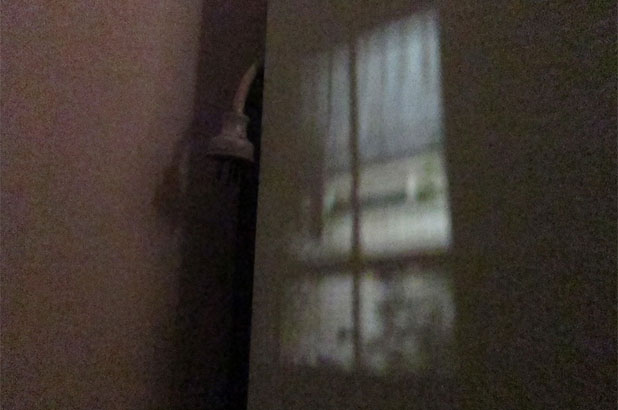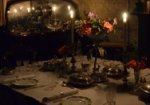Technology in our houses today is ever present, but it’s built-in and generally taken for granted. A light pops out of the ceiling, connected by hidden wires to a switch for example.
To a degree you see this in other historic properties – the bell pulls in the drawing rooms at Vaucluse House or Elizabeth Farm connect to wires that snake through ceilings, inside walls and under floors to the external servants bells, with hinged and sprung mechanisms at the corners:
But this was technology that was built in at the time of construction. It’s a whole other issue when you’re trying to retrofit a house – I know the mess we made running new gas and water lines through my own house, pulling up floors and generally causing chaos. At Meroogal the physical evidence of each generation is not just in furniture, textiles and artworks. It’s in the very obvious introduction to a late Victorian house of gas, piped water and electricity, and how these services were accommodated. Electricity cables are attached directly to ceilings, power points are in unusual positions and, my favourite, a bedside light in an upstairs bedroom is wired to a ceiling fitting.
Quite marvelously, it’s in the house’s surviving kitchen technology that we see time passing most clearly, because each innovation is still there. In one corner of the ‘new’ kitchen, which was created only 4 years after the Thorburns moved into Meroogal and decided to extend their dining room, sits the original ‘Fletcher no.3’ wood stove. The hearth and brick chimney are the same ones from the original kitchen, dismantled and reassembled just a meter away on the other side of the wall. This was used every day right through to the 1950s when it was (cautiously) replaced by a gas stove, then by an electric stove, then back to gas again in the 1970s.
As an experiment, go into your own kitchen and look for evidence of older equipment. Do you still have a range? Is it working or decorative? (I have friends who swear by their wood burning Aga)
And then we have the fridge.
This sits on one side of the dining room, just near the kitchen door, as it was too large for the smaller room. It was bought by Mary Helen Macgregor in 1960, replacing an early 1948 Kelvinator – remember that gas and electric-powered fridges only became available in the Australian market, replacing ice chests, in the late 1930s! Also in the collection is a fabulous ‘Silent Night’ refrigerator with those characteristic huge latches I remember from my great-grandmother’s fridge. The ‘Silent Night’ was an Australian invention by philanthropist Sir Edward Hallstrom. These were inexpensive appliances, gas or electricity powered, that were unfortunately very expensive to run.
I hadn’t looked through the copious documents attached to the 1960 fridge till recently, during a collection stock-take. A collection like this is a bit of a perilous trap for a curator, and you can easily find yourself distracted for way too long. Like I did, following a literal paper trail and pretending all the while I was absorbed in accession codes.
In the records, which Mary scrupulously kept, we read she bought the fridge in 1960, a year after the older fridge was extensively serviced. With the trade in, and allowing for hire purchase payments, it cost her £184.14.00. This translates to a rather considerable $4,878.25 in today’s currency, which would buy you quite a serious fridge indeed! She (presumably being a single woman) also had to provide personal references for the agreement, made out by the local minister, and her brother also had to be involved. 3 years later the final, monthly payment was received by the general Motors Acceptance Corporation, who then mistakenly wrote to her as ‘Mr M. H. Macgregor’.
But there’s something else to this simple fridge, a curiosity of the house pointed out to me by Suzi Krawczyk who has worked at Meroogal for many years. On certain days, when the light is just right, a tiny inverted image of the kitchen complete with window curtains is projected – like a camera obscura vignette – through the adjacent keyhole and onto the side of the appliance. Marvelous.
